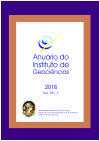Variation of the Pantanal's Landcover from 2000 to 2015 by Remote Sensing with Free Software and Data
DOI:
https://doi.org/10.11137/2016_2_116_123Keywords:
Multitemporal analysis, NDVI, MODIS, QGIS.Abstract
Due to the great environmental importance and the advance of the agro pastoralist activities in Pantanal, the aim of the current study is to analyze the modifications that occurred in the land cover, considered one of the richest areas in biodiversity of the planet. The work is justified on the importance of preserving the Pantanal, since it plays a very important role in the maintenance of such biodiversity. As the livestock is the basis of the local economy, and knowing that it is the activity that most promote deforestation, one should intensify the monitoring to ensure the conservation and predict potential impacts on forest vegetation. Thus, for this work we used TERRA satellite images, MODIS sensor, which are available for free, and also NDVI data (Normalized Difference Vegetation Index), MOD13Q1 product, from the same sensor of two distinct years - 2000 and 2015. Such data were analyzed on QGIS 2.8 (QGIS Development Team, 2015) freely available, where through false color multitemporal reclassification, the change in the land cover was verified between the two years. The results show a reduction of 28.8% of the forest vegetation and an increasing of 11.6% of undergrowth (fields or pastures). It is interesting to highlight that it is possible to apply the methodology used in this work elsewhere without financial cost, since there was no need to purchase the images and software.Downloads
Published
2016-06-23
Issue
Section
não definida
License
This journal is licensed under a Creative Commons — Attribution 4.0 International — CC BY 4.0, which permits use, distribution and reproduction in any medium, provided the original work is properly cited.
















 Except where otherwise noted, content on this site is licensed under a license
Except where otherwise noted, content on this site is licensed under a license 